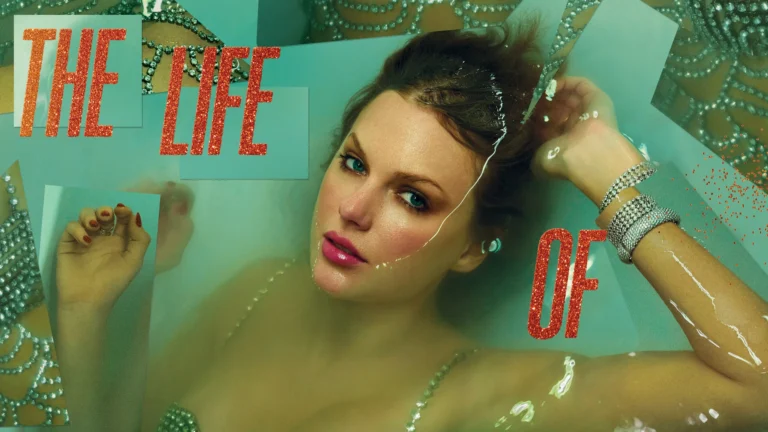Taylor Swift’s Life of a Showgirl: How Her Listening Party Film Is Changing Box Office Rules
When Taylor Swift announced a limited theatrical event tied to the release of her twelfth studio album, The Life of a Showgirl, few could have predicted just how dramatically it would shift expectations for what a “movie” tied to an album can do. The 89-minute event film, Taylor Swift: The Official Release Party of a Showgirl, opened in cinemas from October 3 to October 5, 2025, featuring the world premiere of the “The Fate of Ophelia” music video, behind-the-scenes footage, lyric videos, and Swift’s commentary. AMC Entertainment Holdings
By topping box office charts—not with a traditional narrative film or concert documentary, but with a listening-party hybrid—Swift has forced a reconsideration of box office logic. In this article, I examine how The Life of a Showgirl and its companion film are rewriting rules: in distribution, marketing, fan engagement, exhibition economics, cinematic form, and the blurring of media genres.
How ‘The Life of a Showgirl’ by Taylor Swift Is Redefining Pop in 2025
The Listening Party Film as a New Box Office Species
A non-film that beat traditional films
One of the most remarkable aspects of The Official Release Party of a Showgirl is that it is not a concert film, not a documentary, not a narrative feature—it is a curated album-experience event. Yet it premiered at No. 1 at the U.S. box office, grossing about $34 million domestically and adding roughly $16 million internationally, for a global total surpassing $50 million in its one-weekend run. CBS News
Because this was a “non-film” release, there were no preview showings, no traditional morning sessions—the film debuted in theaters Friday afternoon across time zones. It competed—and won—against conventional theatrical content. That fact alone signals a structural shift: a listening party can now count as box office content.
In effect, The Life of a Showgirl era has introduced a new cinematic format—an album-release event masquerading as a theatrical film. Future pop stars, labels, and distributors may see this as a template for how to monetize fan engagement in theaters.
How it compares to The Eras Tour film
Taylor Swift’s previous theatrical push, The Eras Tour concert film (2023), was a conventional concert documentation that grossed over $260 million globally. By contrast, The Official Release Party of a Showgirl is leaner, conceptually different, and yet punched above its class.
Critics have already compared the two: while the Eras Tour film captured the energy of live performance and the scale of fandom, the showgirl film operates as an immersive reveal. It trades spectacle for intimacy, narrative for commentary, teasing for performance. Some box office analysts argue it cannot match the footprint or longevity of a concert film. Indeed, receipts dropped 49 % in week two domestically, bringing the North American 10-day total to about $42.8 million. Billboard Yet even that falloff is telling: the experiment sustained enough momentum to remain relevant beyond opening weekend.
In short: The Life of a Showgirl listening-party film is not meant to replicate Eras Tour’s scale—it is a new mode, trading in narrative theatricality and fan ritual rather than concert spectacle.
Reinventing Exhibition Strategy
Theatrical as premium event, not screen filler
One of the clearest ways The Official Release Party of a Showgirl is changing box office rules is by treating theaters not simply as screens but as sites of shared ritual. The film was shown as a three-day limited event in thousands of theaters, marketed as an occasion: fans would gather, sing, dance, decode easter eggs, watch exclusive content. People.com It is more akin to a pop event than to a movie night.
Ticket pricing was uniform: $12 in honor of The Life of a Showgirl being her twelfth album. That pricing decision underscores the intent: this is not a premium-ticket film — it is a communal launch. Theaters became stages for fan participation rather than just passive viewing.
By doing this, Swift and her team reframed what theatrical content can be. A release doesn’t need to be a two-hour narrative or documentary—it can be a curated experience, a listening party with cinematic flourishes. Exhibitors learned that audiences will still turn out for novelty and exclusive content, even in a streaming age.
Distribution partnerships and agility
Rather than partnering with a major studio, Swift’s team used AMC Theatres Distribution in the U.S. (in partnership with Variance Films) and Piece of Magic Entertainment internationally.This kind of agile, independent distribution is more commonly seen in specialty or independent cinema, not pop spectacles. The success of The Life of a Showgirl event signals that artists can bypass traditional studio gatekeepers and still dominate box office charts.
Because Swift already had a partnership with AMC (from the Eras Tour film), the theater chain had incentive to support the release aggressively. AMC ultimately declared the event a record-setting, box office smash, citing more than $34 million domestic and over $50 million global box office.
That flexibility—hybrid content, direct distribution, theatrical exclusivity—is now proven viable for megastar artists. Other performers may replicate this for album rollouts, film tie-ins, or music-drama hybrids.
Storytelling, Fan Experience, and Cinematic Form
Narrative sequencing and content curation
While The Official Release Party of a Showgirl is not a straight narrative film, it is structured. It opens with the premiere of “The Fate of Ophelia,” then cycles through behind-the-scenes footage, lyric videos with commentary, interstitial reflections by Swift, and visual motifs tied to The Life of a Showgirl aesthetic. The film is immersive, but it is also carefully curated to tell the story of how the album was made, what the visuals mean, and how the musical era interacts with Swift’s identity.
For fans, this structure turns reception into ritual: watching the film is not passive — it’s participatory. Audiences decode easter eggs, speculate, tweet in real time, and treat the event as communal performance. That dimension blurs the boundary between cinema and concert experience.
Visual motifs and continuity with The Life of a Showgirl era
The film embeds visual continuity with the album’s aesthetic. The “The Fate of Ophelia” video (which screens twice) references showgirls from different time periods, mirrors in dressing rooms, water imagery, and motif items such as opalite, a pearl necklace, and a chihuahua in a purse (a nod to other tracks). The content shows rehearsal processes, costuming, choreography, and Swift’s emotional reflections, reinforcing that The Life of a Showgirl is not just an album but a visual-narrative era.
Because the film is closely tied to the album’s content, theatrical viewing deepens interpretive engagement. Fans who see the film gain context, clues, emotional inflections that extend beyond streaming. In that way, the listening party film works as an augmented experience, a premium layer over ordinary listens.
Breaking norms: audience as performers
One of the more radical shifts in exhibition is how the event encouraged audiences to sing, dance, and move—not quietly observe. The Life of a Showgirl theatrical event turned cinemas into spaces of communal energy, not hushed darkness. Barron’s In many ways, it reanimates the social energy of concerts in a cinematic context, collapsing the distinction between stage and seat.
This shift challenges long-held expectations for behavior in theaters. It suggests that future theatrical events tied to music can adopt hybrid rules: part concert, part screening. Cinema need not always be quiet — in these new modes, audience presence becomes part of the spectacle.
Commercial Outcomes and Box Office Ripples
Breaking records and redefining metrics
From a commercial standpoint, the listening party film delivered astonishing returns. In just three days, it became the biggest album-debut theatrical event in U.S. and global history. It is also the only “non-film” theatrical event in recent memory to finish No. 1 at the box office.
Because the film is tied directly to The Life of a Showgirl, profit from theatrical performance becomes an integral revenue stream of the musical era—not ancillary or promotional. In effect, the album rollout is now part cinematic; revenue is not just streaming or physical sales, but theatricality.
Risk, reward, and scalability
This model is high risk. The logistics, distribution, marketing, and theatrical partnerships must align precisely. If the film underperformed, theater owners, distributors, and fans alike would count it as a misfire. But Swift’s fan loyalty and brand strength provided a safety net few artists have.
The lower margin of theatrical events compared to blockbuster films means scalability is uncertain—but Swift’s event proved viability. It showed that under the right conditions, an artist can convert fan engagement into opening-weekend box office success even in a saturated theatrical calendar.
Influence on industry strategies
Already, analysts speculate about how other artists might replicate this format. Pop icons could slash theatrical premieres into their rollout, turning singles, music videos, or album releases into premium events. Labels and distributors may now budget for theater-level deployment alongside streaming. The ripple effect could pressure cinema chains to adopt more flexible exhibition windows and embrace nontraditional content.
In short, The Life of a Showgirl listening party film may become a pivot point: not just a novelty, but a new category in the box office ecosystem.
Challenges, Critiques, and the Limits of the Model
The durability question: how long can it last?
One limitation is the model’s reliance on fan fervor and novelty. After the first weekend, box office numbers declined sharply (nearly 49 % domestically), raising questions about long-term sustainability. Without narrative depth or repeat viewership potential, the event lacks the rewatchability of blockbusters or concert films.
Further, the restricted theatrical window (just three days) means the model hinges on concentrated commitment rather than gradual build. That compression amplifies risk: if the event underperforms, there is no extended run to make up difference.
Accessibility and geography
Because the film was limited to certain theaters and regions, many fans could not attend due to distance, scheduling, or ticket scarcity. The theatrical-exclusive model is inherently exclusionary in some respects. Critics argue that casting content behind cinematic gates disadvantages fans in rural or underserved areas.
Additionally, because the film doesn’t stream (at least as of release), those unable to attend theaters may feel left out of the shared ritual. The Official Release Party of a Showgirl is not expected to stream on Netflix or Prime Video—a deliberate move to preserve theatrical exclusivity.
Artistic and critical reception
While fans responded enthusiastically, critical reception is mixed. Some reviewers argue the film lacks the showmanship to sustain full narrative weight; others say it caters almost exclusively to diehard Swift fans. The absence of a more cinematic arc or external stakes makes it less accessible to casual audiences. IndieWire
Still, even critics concede the boldness of the experiment. The film may not please everyone, but The Life of a Showgirl era’s cinematic gambit has forced a conversation about artistic ambition and format in an era dominated by streaming.
The Legacy of The Life of a Showgirl in Cinema and Pop
Merging media, collapsing boundaries
The listening party film is part of a broader acceleration toward multimedia integration. In 2025, fans expect albums to be tied to visuals, interactive experiences, and narrative layers. The Life of a Showgirl film demonstrates how movies, music, video, and fan ritual can converge. Theatrical windows may once again be reimagined as stages for experiential pop, not just for cinema.
Reimagining monetization
The event showed that theatrical exhibition is not dead—it can be repurposed. For megastars, movies need not be revenue afterthoughts—they can be revenue drivers. The success of The Official Release Party of a Showgirl suggests that theatrical monetization can be woven into the fabric of a pop era, not appended to it.
Inspiring audacious release strategies
Artists, labels, and distributors will study this model. The question is no longer just, “How do we break streaming?” but “How do we activate cinemas as part of the release?” For those with devoted fanbases and narrative vision, The Life of a Showgirl offers proof that ambitious, hybrid releases can break box office expectations.
In coming years, we may see mini films tied to albums, theatrical premieres of lyrics or visual albums, or limited immersive events born for theaters. The box office of 2025 may be weaker in blockbuster supply—but richer in genre-bending experiments like this.
By redefining what qualifies as a theatrical release, reframing theaters as event sites, and tying box office success directly to an album’s rollout, Taylor Swift’s The Life of a Showgirl listening party film is doing more than generate headlines—it’s expanding the rules. The blend of music, narrative, and spectacle may well become a new norm for pop in a cinematic age.
Conclusion
The Life of a Showgirl isn’t just a Taylor Swift project — it’s a turning point in modern entertainment. By merging film, music, and performance art, Swift has dismantled long-standing barriers between industries and proven that pop can still innovate in meaningful ways.
Her ability to command both emotional depth and global spectacle has redefined what it means to be a pop icon in 2025. The Life of a Showgirl stands as more than a film or an album; it’s a movement — one that celebrates authenticity, artistry, and the enduring magic of performance.
As audiences continue to engage with this cinematic masterpiece, one thing becomes clear: Taylor Swift isn’t just living The Life of a Showgirl — she’s rewriting the very rules of pop itself.
Your English Teacher & Your Gym Teacher: Taylor Swift Gets Engaged!







